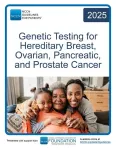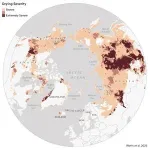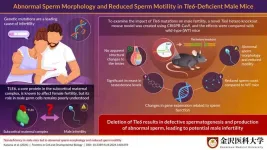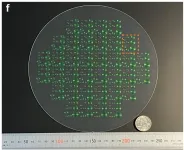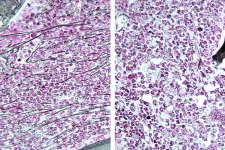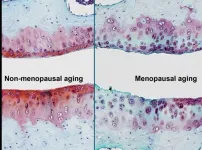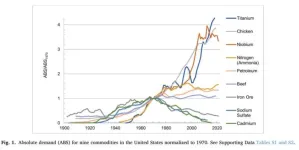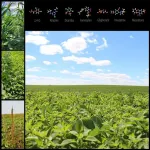(Press-News.org) PLYMOUTH MEETING, PA [January 16, 2025] — Today, the National Comprehensive Cancer Network® (NCCN®)—an alliance of leading cancer centers—published a new resource to inform people about the latest recommendations around hereditary and familial cancer risk. This essential guide is based on the latest evidence and expert consensus in the rapidly advancing field of cancer genetics. It provides guidance on how best to assess, and test for, inherited genetic mutations that can raise the risk of cancer, and presents this information in a straightforward, plainspoken manner.
“No other landscape in medicine has changed as drastically as the field of clinical genetics,” said Mary B. Daly, MD, PhD, FACP, Fox Chase Cancer Center; and Chair of the NCCN Guidelines® Panel for Genetic/Familial High-Risk Assessment: Breast, Ovarian, Pancreatic, and Prostate. “The changes have been facilitated by the work of the Human Genome Project but have gone way beyond its scope. Advances in technology have been a major driver of the explosion of knowledge in genetics, now allowing us to sequence the entire human genome in a short period of time and at a fraction of the cost of previous years. This has led to a better understanding of the natural history of cancer, the ability to assess genetic risk for cancer across populations, the development of clinical management strategies to reduce cancer risk, the development of novel therapeutic agents which target genetic alterations, and to improved education of patients and providers about genetic risk.”
The new NCCN Guidelines for Patients®: Genetic Testing for Hereditary Breast, Ovarian, Pancreatic, and Prostate Cancer is available for free at NCCN.org/patients or via the NCCN Patient Guides for Cancer App thanks to support from the NCCN Foundation®.
“NCCN brings together national experts in hereditary cancer to develop consensus guidelines based on the latest research,” said Susan Friedman, DVM, Executive Director, FORCE: Facing Our Risk of Cancer Empowered, who serves as a patient advocate on the NCCN Guidelines Panel for Genetic/Familial High-Risk Assessment: Breast, Ovarian, Pancreatic, and Prostate. “FORCE and the entire hereditary cancer community rely on the NCCN Guidelines for the most up-to-date and relevant information. Hereditary cancer is hard enough to navigate, so we are thankful for patient-friendly information to help inform the decision-making process.”
“After our mother and aunt were both diagnosed with breast cancer, my sister and I sought genetic testing that revealed that all of us except my sister carried the BRCA2 mutation,” said Denise Portner, a breast cancer survivor and member of the NCCN Foundation Board of Directors. “Had I not known my genetic status, I would not have had the MRI screening that caught my breast cancer as early as it did. Genetic testing is a vital tool in enabling individuals to be proactive in their health care to achieve the best possible outcomes. Having a patient guide that explains the testing process, what clinicians test for, and who should seek testing is an invaluable resource.”
“It’s very important for everyone to understand their cancer risks based on their personal or family history since their personal risk level may necessitate earlier, more frequent, and/or more intensive cancer surveillance,” added Heather Hampel, MS, Certified Genetics Counselor, Associate Director, Division of Clinical Cancer Genomics Professor, Department of Medical Oncology & Therapeutics Research, City of Hope. “This is the best way to ensure that you are doing everything you can to prevent cancer or catch it early when treatment has the best outcome. You can find a local cancer genetic counselor at findageneticcounselor.org if you would like a personalized cancer risk assessment. This often includes genetic testing to determine if you have a hereditary cancer susceptibility running in your family.”
The library of NCCN Guidelines for Patients includes more than 70 free books in multiple languages, featuring easy-to-understand information about prevention, screening, diagnosis, treatment, and supportive care for nearly every type of cancer. They are based on the NCCN Clinical Practice Guidelines in Oncology (NCCN Guidelines®)—which are continuously updated, evidence-based, expert consensus-driven recommendations that guide cancer care teams worldwide.
NCCN’s patient guidelines have earned numerous awards as high-quality, trustworthy sources of patient education on cancer. They are widely recognized for their role in helping to empower people with cancer to make informed treatment decisions that are best for them. Visit NCCN.org/patientresources to learn more about all of the different resources for people with cancer and their caregivers available from NCCN and the NCCN Foundation.
To help support these guidelines, and other patient resources, visit NCCN.org/foundation.
# # #
About the National Comprehensive Cancer Network
The National Comprehensive Cancer Network® (NCCN®) is marking 30 years as a not-for-profit alliance of leading cancer centers devoted to patient care, research, and education. NCCN is dedicated to defining and advancing quality, effective, equitable, and accessible cancer care and prevention so all people can live better lives. The NCCN Clinical Practice Guidelines in Oncology (NCCN Guidelines®) provide transparent, evidence-based, expert consensus-driven recommendations for cancer treatment, prevention, and supportive services; they are the recognized standard for clinical direction and policy in cancer management and the most thorough and frequently-updated clinical practice guidelines available in any area of medicine. The NCCN Guidelines for Patients® provide expert cancer treatment information to inform and empower patients and caregivers, through support from the NCCN Foundation®. NCCN also advances continuing education, global initiatives, policy, and research collaboration and publication in oncology. Visit NCCN.org for more information.
About the NCCN Foundation
The NCCN Foundation is marking 15 years of empowering people with cancer and their caregivers by delivering unbiased expert guidance from the world’s leading cancer experts through the library of NCCN Guidelines for Patients® and other patient education resources. The NCCN Foundation is also committed to advancing cancer treatment by funding the nation’s promising young investigators at the forefront of cancer research. For more information about the NCCN Foundation, visit nccnfoundation.org.
END
Reservoir computing (RC) is a powerful machine learning module designed to handle tasks involving time-based or sequential data, like tracking patterns over time or analyzing sequences. It is widely used in areas such as finance, robotics, speech recognition, weather forecasting, natural language processing, and predicting complex nonlinear dynamical systems. What sets RC apart is its efficiency—it delivers powerful results with much lower training costs compared to other methods.
RC uses a fixed, randomly connected network layer, known as the reservoir, to turn input data into a more complex representation. ...
Infertility is a major global challenge associated with physiological and psychological impact. Genetic mutations that affect early embryonic development, oocyte (egg cell) maturation, and fertilization have recently been studied as causes of infertility. One of the most well-studied causes of early embryonic infertility is mutations in the subcortical maternal complex (SCMC)-related genes.
SCMC participates in embryo development and cleavage by maintaining the structure of the egg cytoplasm and recruiting proteins that assist proper embryo formation. SCMC is composed of multiple proteins, of which the transducin-like ...
Paper-thin optical lenses simple enough to mass produce like microchips could enable a new generation of compact optical devices. A team with researchers at the University of Tokyo and JSR Corp. fabricated and tested flat lenses called Fresnel zone plates (FZPs), but did so for the first time using only common semiconductor manufacturing equipment, the i-line stepper, for the first time. These flat lenses currently lack the efficiency of in-production lenses, but have the potential to reshape optics for industries ranging from astronomy to health care and consumer electronics.
Flat lenses, such as metalenses, exist, but they come with hefty price tags ...
Throughout history, volcanic eruptions have had serious consequences for human societies such as cold weather, lack of sun, and low crop yields. In the year 43 BC when a volcano in Alaska spewed large quantities of sulphur into the stratosphere, harvests failed the following years in the countries around the Mediterranean, causing famine and disease. This is well-documented in written sources from ancient Greece and Rome.
We do not have written sources from the Neolithic. But climate scientists from the Niels Bohr Institute at the University of Copenhagen have analysed ice cores from the Greenland ice sheet and can now document that around 2,900 ...
Two new studies led by researchers at Washington University School of Medicine in St. Louis have identified a possible way to block the progression of several forms of blood cancer using a drug already in clinical trials against breast cancer.
The studies — both conducted in patient samples and animal models — found that inhibiting a protein called RSK1 reduces inflammation and stops the progression of blood cancers called myeloproliferative neoplasms (MPNs) as well as an aggressive form of acute myeloid leukemia (AML). With the RSK1 inhibitor already in clinical testing, the path to expanded use as a treatment for blood ...
Osteoarthritis (OA) is a condition that disproportionally affects postmenopausal women, and the millions affected can attest to the pain, reduced mobility and diminished quality of life that comes from this disease. While the hormonal changes associated with menopause have long been known to accelerate the development and progression of OA, a deeper understanding of the biological mechanisms that underlie this correlation is crucial for developing effective treatments.
A new study led by researchers at Spaulding Rehabilitation, a member of the Mass General Brigham ...
A new study documents the dramatic change in America’s material diet from 1900 to 2020 – ongoing shifts in US commodity consumption patterns with profound environmental, economic, and geopolitical implications.
Published by Iddo K. Wernick of The Rockefeller University’s Program for the Human Environment in the Elsevier journal Resources Policy, the paper details the consumption of 100 key commodities used to build cities, power cars, produce everyday products, and connect people. It charts transformative changes since the start of the 20th century in both absolute ...
Approximately 66 million years ago, the Chicxulub asteroid, estimated to be 10-15 kilometer in diameter, struck the Yucatán Peninsula (in current-day Mexico), creating a 200-kilometer-wide impact crater. This impact triggered a chain reaction of destructive events including a rapid climate change that eventually led to the extinction of the non-avian dinosaurs and in total about 75% of species on Earth. The main culprit is most likely the “impact winter”, which was caused by massive release of dust, soot, and sulfur into the atmosphere, leading to extreme cold, darkness, and a collapse ...
WESTMINSTER, Colorado – 16 January 2025 – Recently published research in the journal Weed Science shows promise for controlling herbicide-resistant weeds in soybean fields by using a seed impact mill at harvest. When installed on a combine, this harvest weed-seed control system (HWSC) mechanically damages weed seeds as they move through the mill to render them non-viable.
Iowa State University Researchers Alexis Meadows and Ram (Ramawatar) Yadav conducted seed impact mill field experiments ...
Amid an increase in suicidal behavior among teen girls, new research links this phenomenon to the significant increase in the number of female students identifying as lesbian, gay, bisexual, or questioning (LGBQ).
“This finding suggests that the overall increase in female suicidality is not due to all female students becoming more suicidal, but rather to a larger proportion of students being part of a group that has historically experienced higher rates of suicidal thoughts and behaviors due to social and structural pressures,” says lead author Joseph Cimpian, ...
